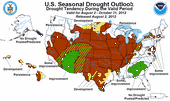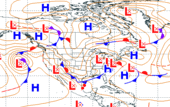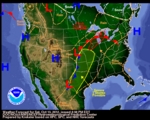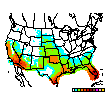To get updated information via an RSS feed, you "subscribe" to the feed. This is another way of saying that you list the feed in an RSS reader (readers are built into many of the newer Web browsers and email programs) and the reader checks for updates to the feed. There is no charge for you to subscribe to the feed.
RSS is written in the Internet coding language known as XML (eXtensible Markup Language). You see RSS buttons commonly labeled with this icon:
Most commonly used to update news articles and other content that changes quickly, RSS feeds may also include audio files (PodCasts) or even video files (VodCasts).
If your government agency offers environmental hazard related information via RSS feeds and would like to have the feed included in this listing, please contact the NOAAWatch Team. The RSS feed will be evaluated for appropriateness to the goals of the NOAAWatch site.
| RSS | Podcasts |
| What
is RSS? Download an RSS Reader |
What
is Podcasting? Podcasts from the U.S. Government |














